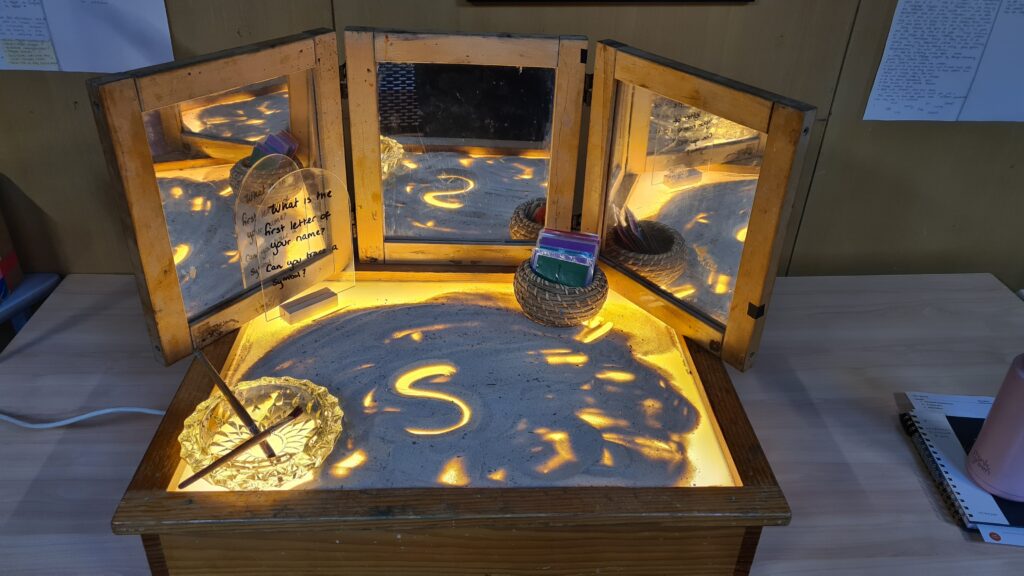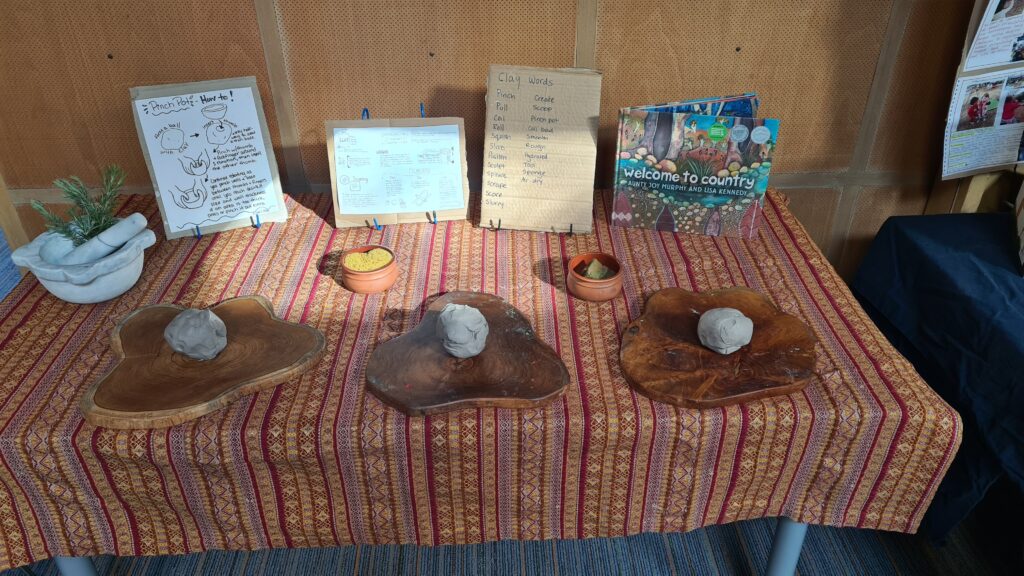The team at our Carlton North service sees the importance of creating aesthetically pleasing spaces for children, gaining some professional development on this topic to explore further. “Knowing the learning styles of the team I realised that interactivity, curiosity and time to engage with the thinking behind the spaces were vital in building the teams understanding of building inviting learning spaces,” says Educational Leader, Sam. “As a team we worked through the purpose, intentionality and learning possibilities and details that make each space inviting.”
Sam walked us through the displays in the rooms. The sand tray, designed for children to express themselves with patterns, letters, or pictures, provides tactile feedback while the light board, mirrors, and glass dishes offer visual stimulation. Prompts guide attention to symbols, including those from First Nations cultures. Safety and aesthetics were considered; the tray has a deep lip, the glass dish is stable, and lighting is secure. This setup suits 3-5-year-olds, fostering curiosity and symbolic understanding while accommodating their developmental stage. It emphasizes respectful, curiosity-inspiring environments where children can explore freely.

The clay table is set up thoughtfully, with designated work areas and tools for children to experiment with the clay. Small dishes with sponges help the children to control water usage and smooth clay, while an airtight bucket promotes proper storage. Clay, unlike playdough, offers diverse learning opportunities, allowing children to build skills and muscles while observing changes over time. However, items like mortars and pestles are reserved for playdough due to their unsuitability for clay. “Both playdough and clay are suitable for many ages of children, though they have slightly different learning opportunities,” says Sam. “Very young children explore differently than older children and that is all part of the journey.”
